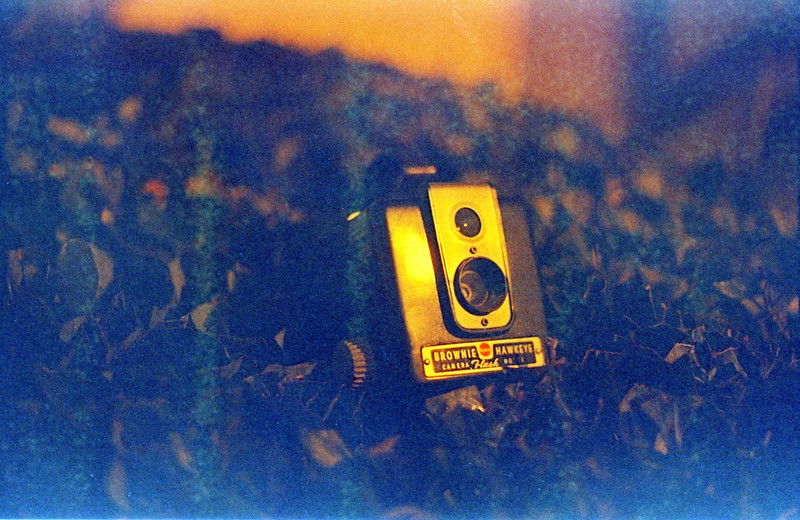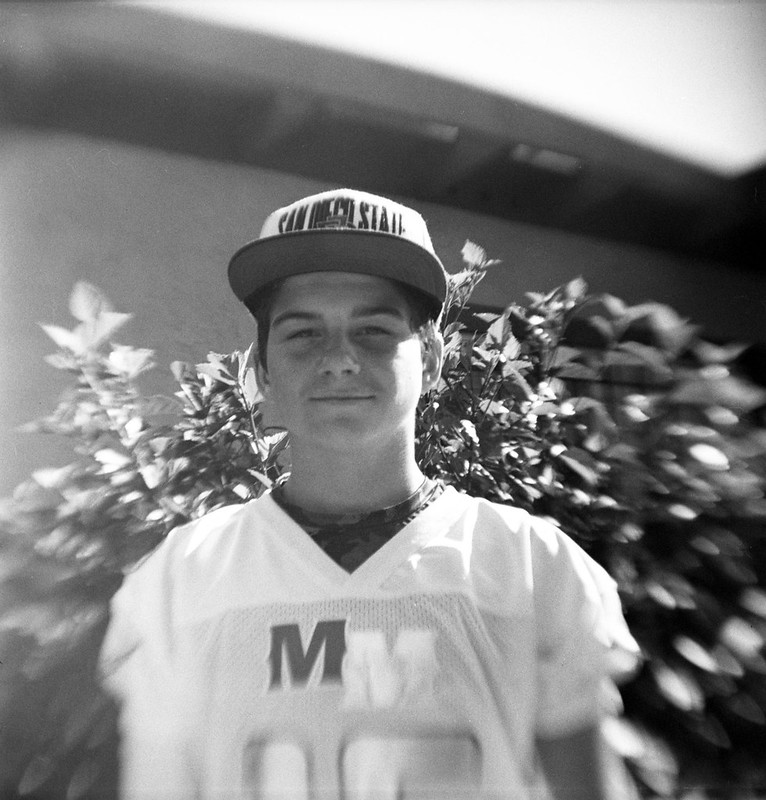I like Bakelite. There, I said it. Specifically I like Bakelite cameras, but radios, jewelry, you name it. At one time it was probably made out of Bakelite. For the youngsters who might be reading this, Bakelite was the first synthetic plastic. I recently acquired a 11953 Kodak Brownie Hawkeye Flash Model (made with Bakelite) from the local Goodwill. I went to pick it up after winning the auction and the young man there lifted it out of the box and didn't notice that the back was not latched to the front. In his defense, he has probably never held, let alone used a camera that wasn't also a mobile phone, so why would he think to be careful about latching the front and back together? The back fell about 4 feet to the concrete floor. A modern plastic would have cracked if not shattered, but the Bakelite took it like a man and just bounced a little. I picked it up, reassured my intrepid assistant that it was fine and put the two halves of the camera together, making sure the latch was fastened. It looked like it had been sitting in an attic for 50 years (which is fairly likely), but the shutter was working and all of the transparent parts were intact. So I took it home and after loosening the 6 screws that hold it all together, started cleaning. For Bakelite, I haven't found anything much better than Flitz for cleaning. It is like toothpaste for plastic and metal. Instead of a brush, I used a paper towel and inside of 30 min, the Bakelite was shining like brand new!

The lenses and mirror took a little soapy water and they were perfect as well. The lens is a single element plastic meniscus lens. So one side is convex and one side is concave. Normally, the convex side goes inward toward the film and that focuses from about 5 feet to around 15 feet. While I was putting it back together, I thought I would flip the lens backwards (this is a common thing to do with these cameras). That causes the lens to focus from about 3 feet to infinity, but only in the center. The edges are thrown into immediate blur. This has a similar effect to vignetting. It draws the viewer's attention to the center of the frame. It is a compositional tool. Especially in square format cameras, which this is, centering your subject is not a 'no no' like it is in rectangular formats. So if you are planning on taking photos where the subject is centered, this might be a good camera to have on hand. It is all fixed (focus, aperture, shutter speed), so the only way to get the right exposures is to choose the right film for the expected light level. I chose expired Tri-X 400 which is nominally iso 200, so works well for sun or shade. Indoors, I would probably have to attach the flash unit (which came with it) and use flash bulbs. Tri-X will push to 3200 or so, but with expired film, the grain is already pronounced, so a 4-stop push is well... pushing it.
Here are a couple photos I took with it.


Worth noting is that this camera takes 620 film. Google it and find out how to respool regular 120 film onto a 620 spool. You will have to do that in order to use this camera. Don't worry, every one of these I have seen has an empty 620 spool in it. Have fun with these old Bakelite cameras. They will probably outlast us all.
No comments:
Post a Comment